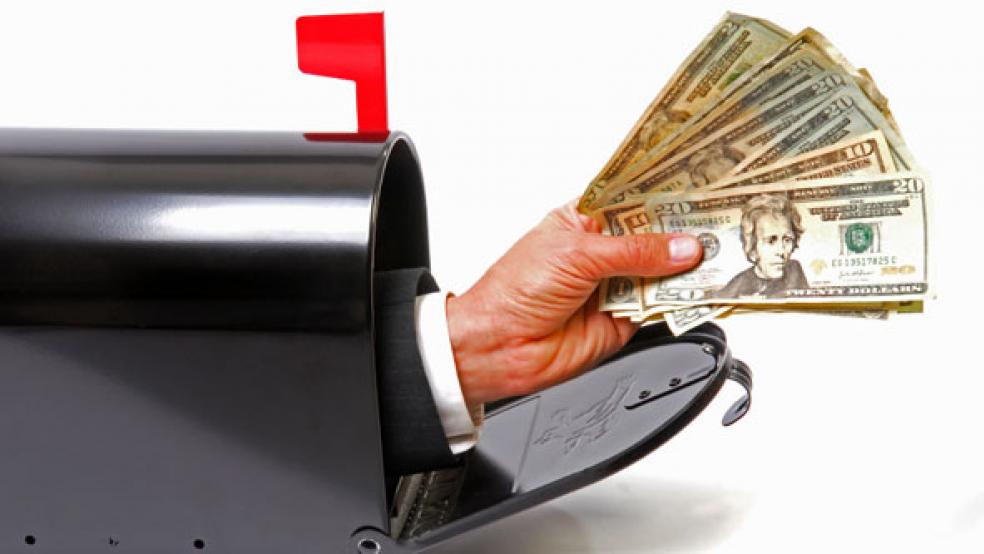Although tax season has only just begun, early data from the IRS shows that the average individual tax refund is 8.4 percent smaller so far this year. Some critics have been quick to blame the Republican tax bill for the drop, citing the loss of deductions for many taxpayers, resulting in higher tax bills and lower refunds. Other critics have seen more nefarious dynamics at work, blaming the Treasury Department for failing to provide proper guidance on withholding amounts early last year, resulting in bigger paychecks for voters but smaller refunds at the end of the year – and in some cases, surprise tax bills.
The Treasury Department, however, pushed back on the initial IRS data earlier this week, tweeting: “News reports on reduction in IRS filings & refunds are misleading. Refunds are consistent with 2017 levels and down slightly from 2018 based on a small initial sample from only a few days of data.”
Many tax experts agree. Howard Gleckman of the Tax Policy Center said that “the data from the initial week of a filing season that will run for three months means almost nothing,” adding that the government shutdown that slowed the IRS makes the initial numbers even less meaningful than usual this year. Using the small data sample we have so far to evaluate the GOP tax bill “is a bit like forecasting your favorite baseball team’s chances of winning the World Series based on the results of its rain-shortened opening day game,” Gleckmam wrote.
More broadly, Gleckman made the argument that many tax experts have offered – namely, that it’s a mistake to focus on refunds on the first place, when all that really matters is how much total tax you pay during the year. Everyone getting a refund has essentially provided the federal government with an interest-free loan, and smaller average refunds would actually make most taxpayers better off financially, since they would be keeping more of their money during the course of the year. And whatever the size of the refund checks, Gleckman says that the tax bill provided most taxpayers with a tax cut in 2018, with about two-thirds of filers paying less, compared to 6 percent who paid more.
But Life Is More Than Economics
Although it may make sense financially to minimize your tax refund, it’s worth remembering that people aren’t always rational when it comes to money. In fact, millions of Americans seem to use the tax withholding system to provide forced savings and rely on their tax refunds to help pay for big-ticket items like house repairs and car purchases. Chuck Marr of the Center on Budget and Policy Priorities touched upon this issue in a tweet Tuesday: “Note to tax folks who think refunds are a misguided interest free loan. You have the math down. Time to pick up a psychology book.”
Todd Yarbrough, an economist at Pace University, highlighted the important role tax refunds played in his family’s life growing up poor in Tennessee. His father’s annual tax refund paid for “Christmas and birthday gifts, but more importantly large expense[s] like car repairs or medical procedures,” which were “often put off until early March when he’d get the refund check.” The forced savings gave his father “peace of mind,” Yarbrough wrote, by providing a reliable cushion that might otherwise have been spent during the year, leaving nothing for a big splurge.
Michael Pearce, an analyst at Capital Economics, said in a note to clients Tuesday that the reduction in forced savings driven by the new tax rules could potentially affect some parts of the economy this year. Pearce expects the initial trend of smaller refund checks to continue, resulting in a $30 billion drop in disposable income for U.S. households in the first quarter compared to a year ago – the equivalent of a 0.7 drop in annualized disposable income. Although “the reality is that most households will pay less tax overall in 2018 than the previous year,” the timing and size of the refund checks will have an effect and “may hit spending on durables goods particularly hard.”
The good news, Pearce says, is that cheaper gas prices should offset the drop in income as far as consumption growth is concerned. And some small business owners and high-income households may find themselves getting larger-than-expected tax refunds thanks to the new pass-through rules, which could help sustain overall economic growth. The durable goods sector would not benefit, however, since lower- and middle-income households are the most likely to turn their refunds into purchases of big-ticket household items, Pearce wrote.




